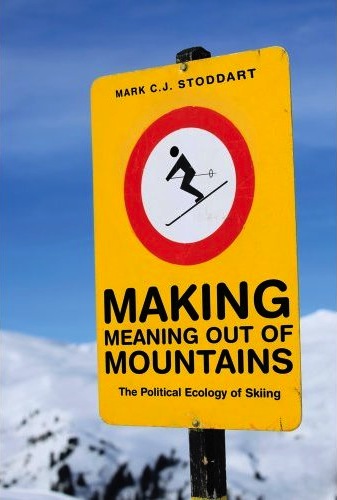It’s been said that every migrant to a mountain town idealizes that town in exactly the form it existed in on the day they arrived. In The Weekender Effect, Canmore, Alberta-based author and water use expert Robert Sandford suffers from a severe case of this particular nostalgia.
It’s been said that every migrant to a mountain town idealizes that town in exactly the form it existed in on the day they arrived. In The Weekender Effect, Canmore, Alberta-based author and water use expert Robert Sandford suffers from a severe case of this particular nostalgia. His brief, highly readable volume is a passionately argued lament for the changes wrought by development in his adopted hometown since he moved there in the early 1980s. The town has lost both its identity and its charm, Sandford argues. It’s become too crowded and anonymous. It even has a traffic light.
Many of the changes that Sandford deplores are not unique to his mountain town, or even to mountain towns in general. Much has changed since 1981. Many towns lacking dramatic mountain scenery have gotten traffic lights too. In many parts of Canada, housing has become unaffordable for young people to buy, even those willing to forsake a view of the famous Three Sisters summits in the name of frugality.
Sandford’s complaints reflect the difficulties of living in an ever-changing world whose population has nearly doubled over the last three decades, and in which North America’s working and middle classes face an increasingly difficult struggle to make ends meet. Cultures and places have never been static, they have only been perceived that way.
This is not to say that The Weekender Effect holds no lessons for mountain towns staring down the devil’s bargain of development or decline. But the ones Sandford articulates are relatively abstract. He proposes that, above all, it is most important that western Canadians not define their identity principally through development, and argues that western identity is rooted more in the region’s undeveloped ecosystems than in the taming of its vast natural resources, although the latter narrative often predominates the region’s sense of self.
Mark Stoddart’s Making Meaning out of Mountains offers a more concrete exploration of how the mountain lifestyle is packaged and sold to non-residents. The associate professor of Sociology at Memorial University relies on interviews with athletes and business stakeholders from two very different British Columbia ski areas – the world famous Whistler-Blackcomb resort and Nelson’s far less well-known Whitewater ski area. Their perspectives allow Stoddart to delve into the details of specific processes that developers use to create the conditions for profitable resort development, as well as how resort-goers perceive their own activities at ski areas.
In order for extraordinary growth – and the extraordinary profits that accompany it – to occur, an environment that people want to buy into must be constructed, in both the physical and social senses of the word. There is a twisted irony to the rustic aesthetic and greenwashed eco-responsibility messaging that lures people to manicured ski slopes and ski-in condos. Many resort-goers see themselves as environmentalists, and claim a connection to the landscape of their leisure.
Yet hyper-developed resorts like Whistler-Blackcomb have conspicuous energy appetites, with ecological footprints far larger than even the gargantuan mountains that play host to them. They maintain a façade of solid ecological stewardship through focused messaging and pro-environmental discourse, but it is only a façade. The legitimately negative environmental impacts of the sport tend to be neglected.
Between destroying wildlife habitat and disrupting animals’ mobility by clearing ski runs, the vast electricity demands of mechanized chairlifts and artificial snowmaking, and the fossil fuel demands of privately owned vehicles commuting to the hill, any ski resort’s footprint quickly becomes deep. Skiers and snowboarders frequently reflect on the environmental impacts of their chosen sport, particularly in its most corporate and consumptive incarnation.
Because the book’s content is drawn from Stoddart’s PhD dissertation, it also reads that way. His arguments are intricately bound with philosophical concepts, peppered with jargon and replete with references to Foucault and Haraway. Readers with both an academic background and an extraordinary interest in skiing or resort development will likely get the most out of it. But for those with the inclination, Making Meaning out of Mountains is a book with much to offer.
The Weekender Effect: Hyperdevelopment in Mountain Towns, Robert W. Sandford, Calgary: Rocky Mountain Books, 2009, 115 pages
Making Meaning out of Mountains, Mark C. J. Stoddart, Vancouver: UBC Press, 2012, 240 pages
Subscribe now to get more book reviews in your mailbox!
Reviewer Information
Tyrone is A\J's book reviews editor.













